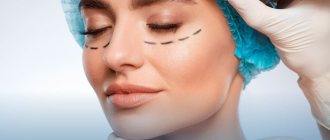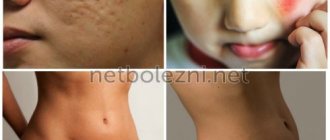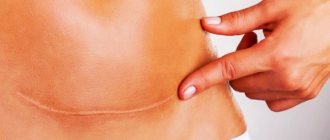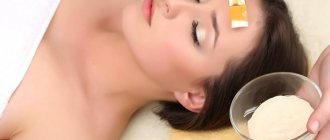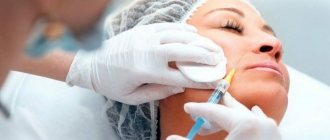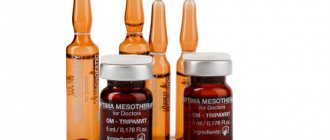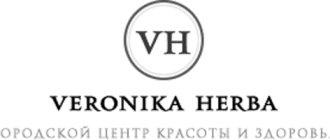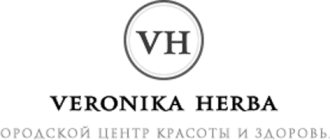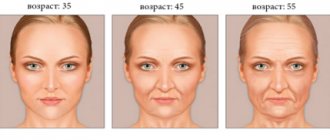One of the most popular aesthetic medicine procedures is “Jolie Cheekbones”. Once upon a time, such beautification cost a lot of money, was carried out only operationally and had nothing to do with the person of Angelina Jolie.
Today this is an ordinary manipulation with the help of fillers , which is in demand both among young ladies and ladies of Balzac age. Among cosmetologists, this procedure is called cheekbone augmentation.
Types of correction
- Cheekbone augmentation involves the implantation of silicone implants. When increasing the zygomatic arch in people with a wide upper part and a wide chin, the result may not meet expectations - the cheekbones will only make the face heavier. But for patients with a narrow forehead and narrow jaw, malarplasty allows them to achieve more pronounced cheekbones. Rehabilitation takes place quite quickly - about two months.
- Reduction malarplasty is often performed for congenital or acquired defects after injury. The operation is technically difficult. Resurfacing of the bone tissue is expected. The recovery process with this type takes up to six months.
Sources
- Gauglitz G., Steckmeier S., Pötschke J., Schwaiger H. Cohesive Polydensified Matrix® hyaluronic acid volumizer injected for cheek augmentation has additional positive effect on nasolabial folds. // Clin Cosmet Investig Dermatol - 2022 - Vol10 - NNULL - p.507-513; PMID:29276401
- D'Agostino A., Trevisiol L., Favero V., Gunson MJ., Pedica F., Nocini PF., Arnett GW. Hydroxyapatite/Collagen Composite Is a Reliable Material for Malar Augmentation. // J Oral Maxillofac Surg - 2016 - Vol74 - N6 - p.1238.e1-1238.e15; PMID:26954559
- Michels P., Vandeputte J., Kravtsov M. Treatment of Age-related Mid-face Atrophy by Injection of Cohesive Polydensified Matrix Hyaluronic Acid Volumizer. // J Clin Aesthet Dermatol - 2015 - Vol8 - N3 - p.28-34; PMID:25852812
- Khiabani K., Keyhan SO., Varedi P., Hemmat S., Razmdideh R., Hoseini E. Buccal fat pad lifting: an alternative open technique for malar augmentation. // J Oral Maxillofac Surg - 2014 - Vol72 - N2 - p.403.e1-15; PMID:24438602
Contraindications
Refusal to perform an operation is possible if there are restrictions such as:
- Age up to 25 years, since before this period the formation of the facial skeleton occurs.
- Dental inflammatory diseases.
- Dermatological diseases of the facial skin.
- Severe pathologies of the heart, blood vessels, kidneys.
- Diabetes.
- Neoplasms of various types.
- Endocrine disorders.
- Infections and viruses.
- Purulent inflammation.
- Individual intolerance to the components of the anesthetic substance.
Types of implants
Endoprostheses used to enlarge the zygomatic region vary in shape and size. Today, all products have the same filler – silicone.
There are implants:
- Oval. Most popular for correction of the anterior zygomatic area. The face becomes wider.
- Anatomical. Will be appropriate for sunken cheeks.
- In the shape of an ellipse.
The choice of product is up to the doctor. To form ideal proportions of facial features, the surgeon needs to choose the right implants. Otherwise, an unnatural protrusion of endoprostheses under the soft cheek area (the so-called Bichat's lumps) is possible.
Preparation
At the preliminary consultation, the doctor assesses the upcoming treatment area, measures it, and selects implants. Some clinics offer 3D modeling after choosing the type of plastic surgery.
The preparatory period includes, in addition to standard tests, an examination by a dentist.
Before the appointed date, the patient begins to prepare the body for surgery: he stops taking any medications or hormonal drugs. Smoking and drinking alcohol is prohibited.
How is cheekbone correction done with fillers?
At the initial appointment, the cosmetologist determines the skin type, identifies existing problems, selects the necessary drug and its dosage. The procedure then includes the following steps:
- Cleansing the skin of impurities and residues of decorative cosmetics.
- Applying an anesthetic cream to make the procedure as comfortable and pain-free as possible.
- Marking. The doctor uses a special pencil to mark the injection site of the drug and the area where it will be distributed. The marks are easily washed off with water after the procedure.
- Administration of the drug by injection, distribution under the skin.
- Repeated skin cleansing with disinfectants.
At the end, the result is assessed. In some cases, a repeat visit may be required to correct the effect.
Technique
The operation is performed under general anesthesia with tracheal intubation. Before starting, the surgeon selects the type of tissue access. Typically, the approach comes from the oral cavity, which involves a 1 cm incision in the alveolar region of the jaw. The advantage of this method is hidden scars, but there are also disadvantages - the risk of infections acquired through the oral route increases.
The external method is used if malarplasty is combined with a facelift. In this case, the scalpel is held behind the ear, heading towards the temporal area.
Cheekbone augmentation is performed as follows:
- Through the selected access, a plane is formed for placing the implant.
- The endoprosthesis is installed in the periosteum pocket. Here it is important to avoid contact with the oral mucosa and teeth.
- The material is fixed in the new position.
- Two stitches are applied.
Approximate duration: 1.5 hours.
Cheekbone reduction is carried out according to the following plan: after marking and making an incision, the doctor grinds the bone tissue with special equipment. This increases the likelihood of damage to the facial nerve.
The newest technique in plastic surgery is three-dimensional reduction. It involves resection of the protruding part of the cheekbone and moving it to a recessed position within the periosteum. With this method, the oval of the face changes.
After completion of the procedure, the patient is treated with antiseptics to reduce pain after recovery from anesthesia.
How long does the effect last?
The duration of the result depends on the metabolic processes in the body and the components in the drug. The duration of action of hyaluronic acid fillers varies from person to person. This substance is present in the body; a special enzyme, hyaluronidase, is responsible for its breakdown. The more active it is, the faster the hyaluronic acid will leave the injection area.
If the enzyme activity is low, then the filler in the cheekbones
will last longer. On average, the effect lasts 6-12 months, dense gels retain the result for 18-24 months. Hyaluronidase can help those clients who do not like the effect - an enzyme can be injected under the skin into the area where the filler is located, it will remove excess gel. Preparations containing calcium hydroxyapatite, unlike those containing hyaluronic acid, have a longer effect - 5 years.
You can repeat the procedure as soon as the effect of the fillers begins to fade. Correction of the cheekbone area can be combined with hardware cosmetology. To get a more pronounced result, Ulthera therapy is recommended for older patients before injections.
. It is necessary to reduce stretched ligaments and tighten tissues. After complex measures, the correction result lasts longer, and subsequently a smaller volume of the drug is required.
We do cheekbones with filler
efficiently and safely, using only certified products.
Thanks to the competent work of specialists, our clients receive a harmonious, aesthetic result without the slightest risk to health. Our clinic is the best cosmetology in Moscow
, we achieved this with high quality work, professionalism of doctors, and innovative equipment. Please call for advice. The price of cheekbone contouring with fillers is indicated on the website
Rehabilitation
The person is placed in a hospital for a day, after which he is sent home.
The stitches are removed on the ninth day. During this period, sharp pain, swelling, blueness, and decreased sensitivity are felt. To alleviate the pain, painkillers are prescribed to prevent the development of infection - antibiotics.
The first 5-7 days are the hardest. During this period you should not eat solid food. Food must be in liquid form.
During the month it is obligatory to:
- Rinse your mouth with a special rinse for disinfection after each meal.
- Do not brush your teeth.
- Don't touch your face.
- Do not apply decorative cosmetics.
- Apply a cold compress several times a day to relieve swelling.
After approximately two weeks, you can return to your normal lifestyle. The general recovery course takes 5-6 months. It can be extended if bone resurfacing has been performed.
Malarplasty: cheekbone augmentation with implants
Lipofilling has an objective limitation to its use: in a patient with a low percentage of body fat, it is difficult to obtain the required number of fat cells due to the poor development of subcutaneous tissue. In such a situation, a full-fledged plastic surgery may be recommended - cheekbone augmentation with implants.
The implant can be a silicone prosthesis or the patient's own cartilage tissue. Each option has its own advantages and disadvantages. If a silicone implant is used during cheek surgery, a protective shell of fibrous tissue may subsequently form around it. However, it does not affect the aesthetics of the cheekbones and face as a whole.
A cartilage implant (a fragment of the patient’s own cartilage tissue) is completely immunologically compatible with tissues, but cartilage is susceptible to the action of enzyme systems. In rare cases, partial resorption (destruction by enzymes) of the implant occurs, which can have a negative impact on the aesthetic result of plastic surgery. Due to the high percentage of resorption, surgeons abandoned the use of autologous bone grafts.
What there can be no doubt about is that after the operation there will be no visible marks left on the face. There will be no scars on the skin, since the plastic surgeon places the implants through incisions in the oral mucosa. The mucous membrane has the highest regenerative potential, recovery is fast. The wound heals in a few days. In the early rehabilitation period, it is enough to strengthen oral hygiene measures, avoid solid foods, hot or cold dishes and drinks.
Complications
The percentage of side effects with malarplasty is quite low, but, nevertheless, it exists. The following risks are possible:
- Numbness and pain when touched. Explained by damage to the trigeminal or facial nerve. It goes away on its own within a few weeks. Unpleasant sensations are relieved with analgesics.
- The appearance of pus and inflammation. Indicates infection during surgery due to non-compliance with sanitation measures. The use of antiseptic drugs and a course of antibiotics is required.
- Hematomas and seromas. They develop as a result of lack of wound drainage. It is necessary to stop the bleeding and install a fluid removal system for a couple of days.
With cheekbone augmentation and implantation, the following may occur:
- Rejection. Happens in 0.9% of cases. The reason is the individual characteristics of the body - sensitivity to certain materials from which the endoprosthesis is made. If this occurs, replacement is required.
- Bias. Occurs only due to ignoring recovery rules. Eliminated by secondary plastic surgery.
Among the specific complications after the procedure, experts emphasize:
- Ptosis of the middle part.
- Chronic sinusitis as a result of trauma to the nasal sinuses.
- Oral injuries.
Side effects such as dizziness, nausea, and swelling are common reactions to surgery. After 3-5 days, the symptoms go away on their own.
Lipofilling: cheekbone augmentation with your own fat
If contouring is a cosmetic procedure, then lipofilling is a plastic surgery, albeit a gentle one that does not leave visible marks. A plastic surgeon performs lipofilling of the cheekbones. The operation takes place in three stages. All manipulations are carried out under local anesthesia; as a rule, there is no need for anesthesia.
At the first stage, the plastic surgeon takes adipose tissue for subsequent transplantation. The source of fat cells is an area of the body with good development of subcutaneous tissue. As a rule, the anterior wall of the abdomen, buttocks or thighs is used as a donor. The plastic surgeon removes fat cells using gentle water-jet liposuction, which does not damage blood vessels and allows you to obtain intact, viable cells.
At the second stage of the operation, the material is sent to the laboratory. In the laboratory, fat cells are cleaned of impurities (liposuction solution, blood, dead cells) and saturated with growth factors, which improve graft survival in the correction area.
The third stage of the operation is the introduction of a fraction of viable cells into the tissue of the correction zone, in this case, in the area of the zygomatic eminence. To do this, the plastic surgeon uses the injection method. Fat is injected through atraumatic cannulas with a blunt end, without incisions. Tissue trauma during surgery is minimal. Complications are excluded; minor side effects such as hematomas and swelling of the recipient area disappear within a few days.
The advantage of the operation is a lasting and most natural result. Lipofilling allows you to achieve a uniform increase in cheekbones. The face after surgery looks harmonious and proportional. Fat cells integrate into the tissue architecture, do not cause inflammatory reactions, and do not provoke an immune response. The result lasts for many years, which distinguishes this technique favorably from contour correction.
Another advantage of lipofilling is its anti-aging effect. The cheekbone correction procedure triggers the processes of self-healing and renewal of the tissues of the middle third of the face. A rejuvenating effect is achieved due to the fact that the fat graft contains many stem cells; in addition, before transplantation, it is enriched with growth factors that stimulate the regeneration process at the cellular and tissue level.
Result
Unlike lipofilling or contour plastic surgery, malarplasty is durable. The operation is performed once and the effect lasts throughout life. No re-correction is required.
Other advantages include:
- Partial smoothing of nasolabial folds.
- Smoothing out wrinkles.
- Some elimination of zygomatic hernias.
Who is indicated for cheekbone augmentation?
Women intuitively strive for triangular facial harmony. A young face, whatever its shape, is an inverted triangle, with the chin at the top and the forehead at the base.
Cheekbones emphasize the base, both from the front and in profile.
To look young, you need to have clear, accentuated cheekbones!
With age (or anatomically at a young age), cheekbones may become less pronounced and the shape of an even triangle is lost. This is also aggravated by age-related ptosis – drooping of facial tissues. A striking example of pronounced cheekbones was actress A. Jolie.
Direct indications for the procedure are:
- facial asymmetry;
- sunken cheeks;
- soft tissue ptosis;
- nasolabial folds;
- weak cheekbones.
In addition to independently transforming the cheekbone area, cheekbone enlargement allows you to smooth out small nasolabial folds, get rid of eye bags and hollows under the eyes in the lateral areas. The procedure for enlarging the cheekbones is carried out with a needle or cannula using special preparations for facial contouring - fillers.
Photos before and after correction of the zygomatic region
During correction, dense and viscous preparations are used that are able to hold their shape well. The amount of the drug on each side of the face is individual, you can focus on 1-2 ml.
Important! The effect of pronounced cheekbones cannot be achieved with such a “promoted” procedure as “vector lifting!”
The result after the procedure lasts for 9-14 months.
Price
Prices for malarplasty vary from 65 to 145 thousand rubles. In Moscow clinics the prices are as follows:
| Type of operation | Price |
| Enlargement of cheekbones | 35,000 - 90,000 rub. |
| Implants | 30,000 - 50,000 rub. |
| Reduction surgery (bone resurfacing) | 90,000 -145,000 rub. |
Author: Mamedov Elchin Velievich Plastic surgeon, associate professor of medical sciences He is considered one of the founders of endoscopic facial rejuvenation in the Russian Federation. He has performed many operations on endoscopic facelift, otolasty, rhinoplasty, platysmoplasty, liposuction and abdominoplasty.
Cheekbone contouring and thread lifting: differences
Contour plastic and thread lifting are effective methods of non-surgical facial rejuvenation. There is a lot in common between them, but there are also fundamental differences:
- The filler is a gel-like preparation, the threads are a polymer.
- The principle of action of fillers is based on filling tissue volumes; the threads activate collagen production and/or pull tissue up.
- The effects of threads tend to last less.
Unique thread lifting techniques allow you to fix the threads in a position that contributes to the formation of a reliable skin frame and volume in the cheekbone area. However, if you lack volume in the cheekbone area (with age or naturally), then there will simply be nothing for the threads to fix.
Thread methods move tissue, contouring methods with fillers add the necessary volume. In some cases, these methods can be used in combination.
For patients under 30 years of age, preparations based on hyaluronic acid are indicated. After 35, fillers with a higher density are relevant, for example, Radiesse, which does not attract water and does not cause delayed swelling. Most modern drugs are biodegradable and absolutely safe.
